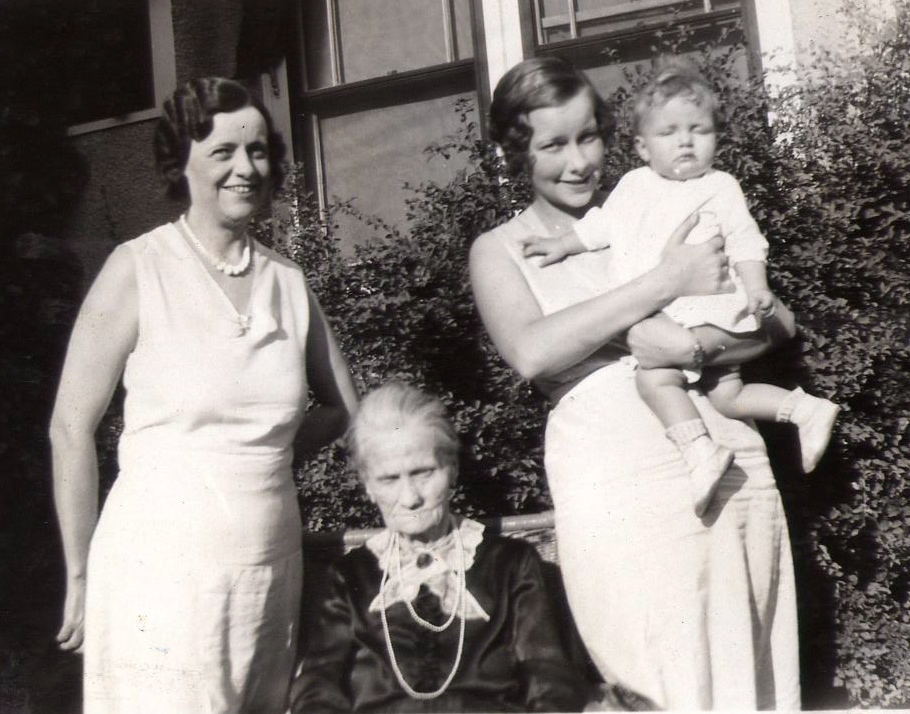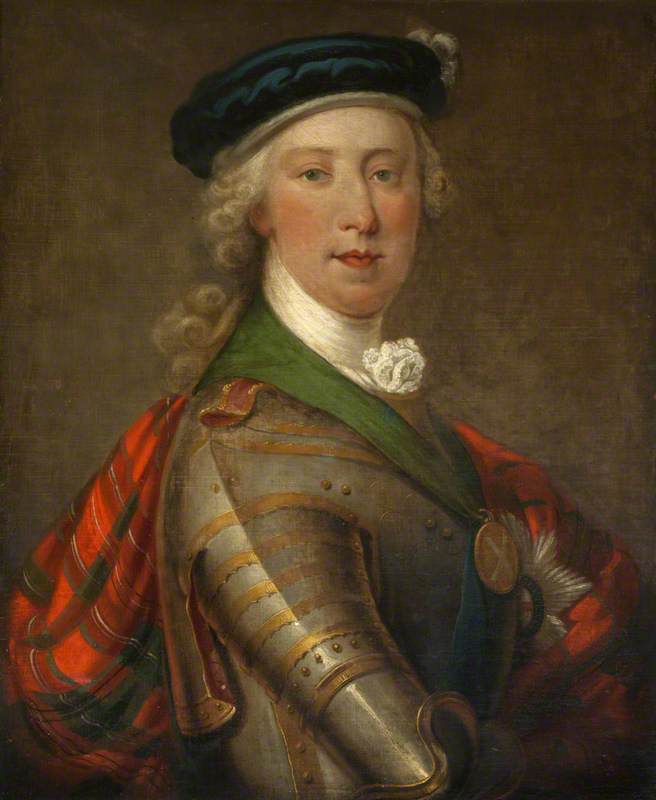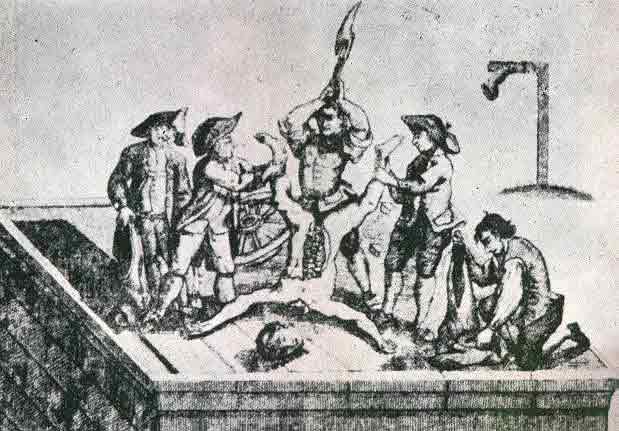|
Margaret, 2nd Lady Nairne
Margaret Nairne, 2nd Baroness Nairne, later Countess of Nairne, (1669 - 14 November 1747) was a Scottish noblewoman at the turn of the 18th century and active in the Jacobite cause for its duration. Her husband, William Murray, 2nd Lord Nairne, was condemned to death for his role in plans for a Scottish rebellion supported by neighbouring France; Lady Margaret travelled from Edinburgh to London to agitate in person for her husband's reprieve from execution, which was eventually successful. Family Margaret was born in Edinburgh in 1669, the only child of Margaret Graham and Robert Nairne, Lord Strathord and 1st Lord Nairne. After her father's death in 1683 Margaret became Baroness Nairne in her own right for seven years. As was typical among aristocratic families of the time Margaret's engagement was arranged (or 'contracted'). Her first engagement was to Lord George Murray but this contract was nullified due to Lord George's ongoing poor health, and in 1690 Margaret married hi ... [...More Info...] [...Related Items...] OR: [Wikipedia] [Google] [Baidu] |
Jacobitism
Jacobitism (; gd, Seumasachas, ; ga, Seacaibíteachas, ) was a political movement that supported the restoration of the senior line of the House of Stuart to the Monarchy of the United Kingdom, British throne. The name derives from the first name of James II and VII, which in Latin translates as ''Jacobus (name), Jacobus''. When James went into exile after the November 1688 Glorious Revolution, the Parliament of England argued that he had abandoned the Kingdom of England, English throne, which they offered to his Protestant daughter Mary II, and her husband William III of England, William III. In April, the Convention of Estates (1689), Scottish Convention held that he "forfeited" the throne of Scotland by his actions, listed in the Articles of Grievances. The Revolution thus created the principle of a contract between monarch and people, which if violated meant the monarch could be removed. Jacobites argued monarchs were appointed by God, or Divine right of kings, divine right, a ... [...More Info...] [...Related Items...] OR: [Wikipedia] [Google] [Baidu] |
Newgate Prison
Newgate Prison was a prison at the corner of Newgate Street and Old Bailey Street just inside the City of London, England, originally at the site of Newgate, a gate in the Roman London Wall. Built in the 12th century and demolished in 1904, the prison was extended and rebuilt many times, and remained in use for over 700 years, from 1188 to 1902. For much of its history, a succession of criminal courtrooms were attached to the prison, commonly referred to as the "Old Bailey". The present Old Bailey (officially, Central Criminal Court) now occupies much of the site of the prison. In the late 1700s, executions by hanging were moved here from the Tyburn gallows. These took place on the public street in front of the prison, drawing crowds until 1868, when they were moved into the prison. History In the early 12th century, Henry II instituted legal reforms that gave the Crown more control over the administration of justice. As part of his Assize of Clarendon of 1166, he requi ... [...More Info...] [...Related Items...] OR: [Wikipedia] [Google] [Baidu] |
Daughters Of Barons
A daughter is a female offspring; a girl or a woman in relation to her parents. Daughterhood is the state of being someone's daughter. The male counterpart is a son. Analogously the name is used in several areas to show relations between groups or elements. From biological perspective, a daughter is a first degree relative. The word daughter also has several other connotations attached to it, one of these being used in reference to a female descendant or consanguinity. It can also be used as a term of endearment coming from an elder. In patriarchal societies, daughters often have different or lesser familial rights than sons. A family may prefer to have sons rather than daughters and subject daughters to female infanticide. In some societies it is the custom for a daughter to be 'sold' to her husband, who must pay a bride price. The reverse of this custom, where the parents pay the husband a sum of money to compensate for the financial burden of the woman and is known as a dow ... [...More Info...] [...Related Items...] OR: [Wikipedia] [Google] [Baidu] |
Scottish Jacobites
Scottish usually refers to something of, from, or related to Scotland, including: *Scottish Gaelic, a Celtic Goidelic language of the Indo-European language family native to Scotland *Scottish English *Scottish national identity, the Scottish identity and common culture *Scottish people, a nation and ethnic group native to Scotland *Scots language, a West Germanic language spoken in lowland Scotland *Symphony No. 3 (Mendelssohn), a symphony by Felix Mendelssohn known as ''the Scottish'' See also *Scotch (other) *Scotland (other) *Scots (other) *Scottian (other) *Schottische * {{disambiguation Scottish people, Language and nationality disambiguation pages ca:Escocès ... [...More Info...] [...Related Items...] OR: [Wikipedia] [Google] [Baidu] |
1747 Deaths
Events January–March * January 31 – The first venereal diseases clinic opens at London Lock Hospital. * February 11 – King George's War: A combined French and Indian force, commanded by Captain Nicolas Antoine II Coulon de Villiers, attacks and defeats British troops at Grand-Pré, Nova Scotia. * March 7 – Juan de Arechederra the Spanish Governor-General of the Philippines, combines his forces with those of Sultan Azim ud-Din I of Sulu to suppress the rebellion of the Moros in the Visayas. * March 19 – Simon Fraser, the 79-year old Scottish Lord Loyat, is convicted of high treason for being one of the leaders of the Jacobite rising of 1745 against King George II of Great Britain and attempting to place the pretender Charles Edward Stuart on the throne. After a seven day trial of impeachment in the House of Lords and the verdict of guilt, Fraser is sentenced on the same day to be hanged, drawn and quartered; King George alters Fraser' ... [...More Info...] [...Related Items...] OR: [Wikipedia] [Google] [Baidu] |
1669 Births
Events January–March * January 2 – Pirate Henry Morgan of Wales holds a meeting of his captains on board his ship, the former Royal Navy frigate ''Oxford'', and an explosion in the ship's gunpowder supply kills 200 of his crew and four of the pirate captains who had attended the summit. * January 4 – A 5.7 magnitude earthquake strikes the city of Shamakhi in Iran (now in Azerbaijan) and kills 7,000 people. Fourteen months earlier, an earthquake in Shamakhi killed 80,000 people. * February 13 – The first performance of the ''Ballet de Flore'', a joint collaboration of Jean-Baptiste Lully and Isaac de Benserade is given, premiering at the Palais du Louvre in Paris. King Louis XIV finances the performance and even appears in a minor role in the production as a dancer. * February 23 – Isaac Newton writes his first description of his new invention, the reflecting telescope. * March 11 – Mount Etna erupts, destroying the Sicilian town of ... [...More Info...] [...Related Items...] OR: [Wikipedia] [Google] [Baidu] |
Charles Edward Stuart
Charles Edward Louis John Sylvester Maria Casimir Stuart (20 December 1720 – 30 January 1788) was the elder son of James Francis Edward Stuart, grandson of James II and VII, and the Stuart claimant to the thrones of England, Scotland and Ireland from 1766 as Charles III. During his lifetime, he was also known as "the Young Pretender" and "the Young Chevalier"; in popular memory, he is known as Bonnie Prince Charlie. Born in Rome to the exiled Stuart court, he spent much of his early and later life in Italy. In 1744, he travelled to France to take part in a planned invasion to restore the Stuart monarchy under his father. When the French fleet was partly wrecked by storms, Charles resolved to proceed to Scotland following discussion with leading Jacobites. This resulted in Charles landing by ship on the west coast of Scotland, leading to the Jacobite rising of 1745. The Jacobite forces under Charles initially achieved several victories in the field, including the Battle of ... [...More Info...] [...Related Items...] OR: [Wikipedia] [Google] [Baidu] |
George I Of Great Britain
George I (George Louis; ; 28 May 1660 – 11 June 1727) was King of Great Britain and Ireland from 1 August 1714 and ruler of the Electorate of Hanover within the Holy Roman Empire from 23 January 1698 until his death in 1727. He was the first British monarch of the House of Hanover as the most senior Protestant descendant of his great-grandfather James VI and I. Born in Hanover to Ernest Augustus and Sophia of Hanover, George inherited the titles and lands of the Duchy of Brunswick-Lüneburg from his father and uncles. A succession of European wars expanded his German domains during his lifetime; he was ratified as prince-elector of Hanover in 1708. After the deaths in 1714 of his mother Sophia and his second cousin Anne, Queen of Great Britain, George ascended the British throne as Anne's closest living Protestant relative under the Act of Settlement 1701. Jacobites attempted, but failed, to depose George and replace him with James Francis Edward Stuart, Anne's Catholi ... [...More Info...] [...Related Items...] OR: [Wikipedia] [Google] [Baidu] |
Tower Of London
The Tower of London, officially His Majesty's Royal Palace and Fortress of the Tower of London, is a historic castle on the north bank of the River Thames in central London. It lies within the London Borough of Tower Hamlets, which is separated from the eastern edge of the square mile of the City of London by the open space known as Tower Hill. It was founded towards the end of 1066 as part of the Norman Conquest. The White Tower (Tower of London), White Tower, which gives the entire castle its name, was built by William the Conqueror in 1078 and was a resented symbol of oppression, inflicted upon London by the new Normans, Norman ruling class. The castle was also used as a prison from 1100 (Ranulf Flambard) until 1952 (Kray twins), although that was not its primary purpose. A grand palace early in its history, it served as a royal residence. As a whole, the Tower is a complex of several buildings set within two concentric rings of defensive walls and a moat. There were severa ... [...More Info...] [...Related Items...] OR: [Wikipedia] [Google] [Baidu] |
William Murray, 2nd Lord Nairne
William Murray, 2nd Lord Nairne (''c.'' 1665 – 3 February 1726) was a Scottish peer and Jacobite who fought in the Rising of 1715, after which he was attainted and condemned to death for treason, but in 1717 he was indemnified and released. In 1721, he was created Earl of Nairne in the Jacobite peerage. Life Born about 1665, the fourth son of John Murray, 1st Marquess of Atholl, by his marriage to Lady Amelia Sophia, a daughter of James Stanley, 7th Earl of Derby, Murray was the younger brother of John Murray, 1st Duke of Atholl. Melville Henry Massue, Marquess of Ruvigny & Raineval, ''The Jacobite Peerage, Baronetage, Knightage, and Grants of Honour'' (Genealogical Publishing Co., 2003 edition)p. 126/ref> His grandmother, Charlotte Stanley, Countess of Derby (1599–1664), a daughter of Claude de La Trémoille, Duke of Thouars (1566–1604) was famous in her own right for her defence of Lathom House against Parliamentary forces during the First English Civil War in 1644. ... [...More Info...] [...Related Items...] OR: [Wikipedia] [Google] [Baidu] |
High Treason In The United Kingdom
Under the law of the United Kingdom, high treason is the crime of disloyalty to the Crown. Offences constituting high treason include plotting the murder of the sovereign; committing adultery with the sovereign's consort, with the sovereign's eldest unmarried daughter, or with the wife of the heir to the throne; levying war against the sovereign and adhering to the sovereign's enemies, giving them aid or comfort; and attempting to undermine the lawfully established line of succession. Several other crimes have historically been categorised as high treason, including counterfeiting money and being a Catholic priest. Jesuits, etc. Act 1584 High treason was generally distinguished from petty treason, a treason committed against a subject of the sovereign, the scope of which was limited by statute to the murder of a legal superior. Petty treason comprised the murder of a master by his servant, of a husband by his wife, or of a bishop by a clergyman. Petty treason ceased to be a disti ... [...More Info...] [...Related Items...] OR: [Wikipedia] [Google] [Baidu] |
Battle Of Preston (1715)
:''See Battle of Preston (1648) for the battle of the Second English Civil War.'' The Battle of Preston (9–14 November 1715) was the final action of the Jacobite rising of 1715, an attempt to put James Francis Edward Stuart on the British throne in place of George I. After two days of street-fighting, the Jacobite commander Thomas Forster surrendered to government troops under General Charles Wills. It was arguably the last battle fought on English soil. Background The Jacobites moved south into England with little opposition, and by the time they reached Preston, Lancashire had grown to about 4,000 in number. Their cavalry entered Preston on the night of 9 November 1715, and as they approached two troops of dragoons and part of a militia regiment retreated to Wigan. General Charles Wills was ordered to halt their advance, and left Manchester on 11 November with six regiments, arriving on 12 November. The Jacobite leader was Thomas Forster, a Northumberland squire with m ... [...More Info...] [...Related Items...] OR: [Wikipedia] [Google] [Baidu] |









